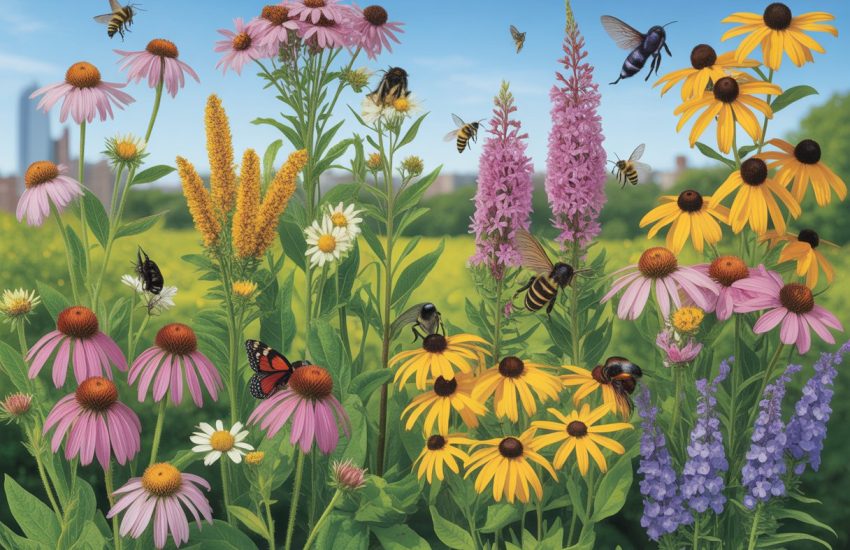Weeds that Look Like Sage: How to Identify Them
Weeds that look like sage can be a nuisance for gardeners and landscapers who are trying to cultivate a specific look or grow certain types of plants. Sage is a popular herb that is used in cooking and has many medicinal properties. However, it can be difficult to identify sage from other plants that may look similar.

Some weeds that look like sage include white sage, Russian sage, and speedwell. These plants have similar leaves and flowers to sage, making it difficult to tell them apart. It is important to be able to identify these weeds in order to prevent them from taking over a garden or lawn.
There are several methods for identifying weeds that look like sage, including examining the leaves and flowers, checking the plant’s height and growth pattern, and smelling the plant. Gardeners and landscapers can use these methods to determine whether a plant is sage or a weed that looks like sage. By being able to identify these weeds, they can take the necessary steps to control and prevent their growth.
Identifying Weeds That Resemble Sage

When it comes to identifying weeds that resemble sage, there are a few physical characteristics to look out for. In this section, we will discuss the physical characteristics of sage and its lookalikes, as well as some common weeds that resemble sage.
Physical Characteristics
Sage is a perennial herb that has woody stems and gray-green leaves with a velvety texture. The leaves are oblong, with a slightly curved shape, and have a strong aroma when crushed. Sage produces small, purple flowers in the summer months.
Weeds that resemble sage often have similar physical characteristics, such as oblong leaves and a gray-green color. However, there are some key differences to note. For example, Russian sage has a more fern-like foliage and produces lavender upright spires, while silver ragwort has silver leaves that look like some salvia species.
Common Sage Lookalikes
One common weed that resembles sage is the common sagebrush. Sagebrush has silver sword-like leaves and flower spikes resembling sage. However, it is important to note that sagebrush is not edible and can be toxic if ingested.
Another common weed that resembles sage is the Russian sage. Russian sage has a similar plant structure, leaves, and flowers as sage, but it differentiates itself with foliage that is more fern-like. It is important to note that Russian sage is a garden plant, while sage is a wild herb.
Other weeds that resemble sage include silver ragwort, catmint, and catnip. These weeds have oval leaves and purple flower spikes resembling sage. However, it is important to note that not all plants are edible, and some weeds can be toxic if ingested.
To control weeds that resemble sage, it is important to identify them correctly. Perennial weeds with a strong root system, such as thistle and nutsedge, can be difficult to control and may require the use of herbicides. Annual weeds, such as dandelion, crabgrass, bindweed, and chickweed, can be controlled through regular weeding and the use of herbicides.
In conclusion, identifying weeds that resemble sage can be challenging, but with the right knowledge and tools, it is possible to control them effectively. By understanding the physical characteristics of sage and its lookalikes, gardeners and homeowners can maintain a healthy and beautiful landscape.
Management and Control Strategies

Preventative Measures
The best way to manage weeds that look like sage is to prevent them from establishing in the first place. Homeowners and landscapers can take a few simple measures to prevent the spread of weeds:
- Apply a layer of mulch to prevent weed seeds from germinating.
- Use landscape fabric to suppress weed growth.
- Apply pre-emergent herbicides to prevent weed seeds from sprouting.
- Avoid over-fertilizing with nitrogen, which can encourage weed growth.
Eradication Techniques
If weeds that look like sage have already established, there are several control options available. Post-emergent herbicides can be used to kill existing weeds, while pre-emergent herbicides can be used to prevent new weeds from sprouting. However, it is important to use herbicides carefully and follow all label instructions. Homeowners and landscapers should wear gloves and take care not to spray herbicides on desirable plants.
Another option is to smother the weeds by covering them with a layer of mulch or landscape fabric. This will prevent sunlight from reaching the weeds and eventually kill them. However, this method may take longer than using herbicides.
In conclusion, managing weeds that look like sage requires a combination of preventative measures and eradication techniques. Homeowners and landscapers should take care to prevent the spread of weeds and use herbicides carefully when necessary.


